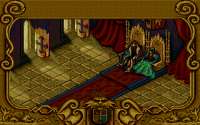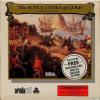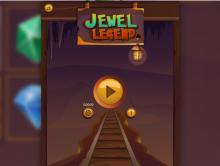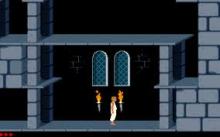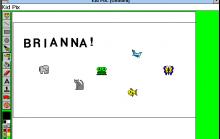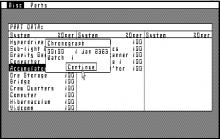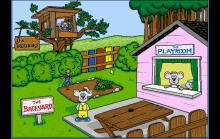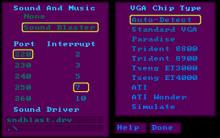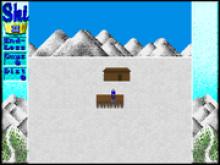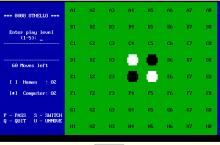Seven Cities of Gold
Press Keyboard right side: Alt+Enter keys to switch to full screen game play, and Alt+Enter keys to return.
How to play Seven Cities of Gold
Each game uses different controls, most DOS games use the keyboard arrows. Some will use the mouse.
Seven Cities of Gold Description
The game begins with the player having been given an exploration fleet by the Spanish crown, consisting of four ships, one hundred men, and some trade goods. The game appears showing a city in Spain, a fairly simplified 2D side-scrolling representation of the town consisting of the player's home, a palace, a pub and an outfitters. The player can walk about the town with the joystick, walking into the buildings in order to interact with them via menus. For instance, walking into the outfitters will bring up a menu allowing the user to buy supplies, men and trade goods. Interaction in Spain is fairly limited; the player soon moves to the ships, at one end of the city map, to leave port.
Most of the game is played on a game screen with a small scrolling top-down map in the center and a number of status displays surrounding it. After leaving port the display switches to this map, and the player guides the ship to the New World. At any point the player can bring up a menu with contents based on the player's current location. For instance, if the menu is brought up while on the ship, the items allow you to view the map, or "drop stuff off", the later selection allowing exploration parties to be created by dropping of men and supplies from the ships. When the player is on land as part of an exploration party, the same menu item creates a fort when men are dropped off in it.
Upon arriving in the new world, the player can explore the coastline, set up missionaries and forts, and interact with the native peoples. Approaching the villages results in the map zooming in to show the village, represented by four buildings, and the natives moving about. In the center is the village chieftain, approaching him and opening the menu allows trade for gold and food. The player has the option to peacefully trade with or conquer the natives, and can (with the right choices and luck) sometimes convert them, turning the village into a mission.
The natives can be attacked simply by moving onto them. A few accidental killings is acceptable to the village, and sometimes unavoidable, but too many and the natives will become hostile and attack the party. In many cases the Spanish can overwhelm the natives, who will eventually give up fighting and allow the Spanish to plunder the town. Ambushes are also common, between the towns.
Much of Seven Cities of Gold was influenced by historical accounts of the era. Interactions with the natives could be peaceful or hostile, or become hostile due to the language barrier. While it could be assumed that the goal of the game is to return with riches from the New World, there really are no goals at all. The game has no scoring system and provides the player with feedback from the King, but no interference, if they slaughter the natives. According to Bunten, from an interview in Antic:
"The peaceful approach really works best. I have not used a totally depraved approach and won. You've got to have some friends somewhere. If something goes wrong, you need a friendly mission where you can go back and not have to worry about an insurrection or something. A place you can return to and know that there will be food, for example. You need a series of these relatively safe places even if you are going on a conquest mission. If you continually abuse the natives you will eventually see a message from the king saying 'Don't treat the natives so badly. But keep the gold coming.' This double standard is straight out of history."
The size of the New World was one of the concepts which were integrated into the design; the land had to be detailed and diverse. As a result, data storage and retrieval became a major issue, particularly as the developers did not want lengthy load times to interfere with the game. As described by Bunten, "Our only way out was to use technologies we didn't have until we were forced to invent them." The game used a streaming system to allow the map to be loaded in without interrupting game play. The game ships with a single "world" closely modeled on the real one, including details as small as the Florida Keys and most well-known rivers. The game also includes a world creating engine that allows the user to build a truly new New World, saving it to a user supplied disk.
Game maps include one or more "lost cities" that are hidden by a mountain icon in locations that are typically far from other land masses. Explorers that stumble on one of these hidden cities will be greeted with the message "Sir, we have discovered a lost city." Inhabitants of this type of village are docile and run from the player and when the chief of the village is approached, the game will inform the player that "We may take what we want as tribute!" and the user will be able to acquire a sizable amount of gold without having to trade.







